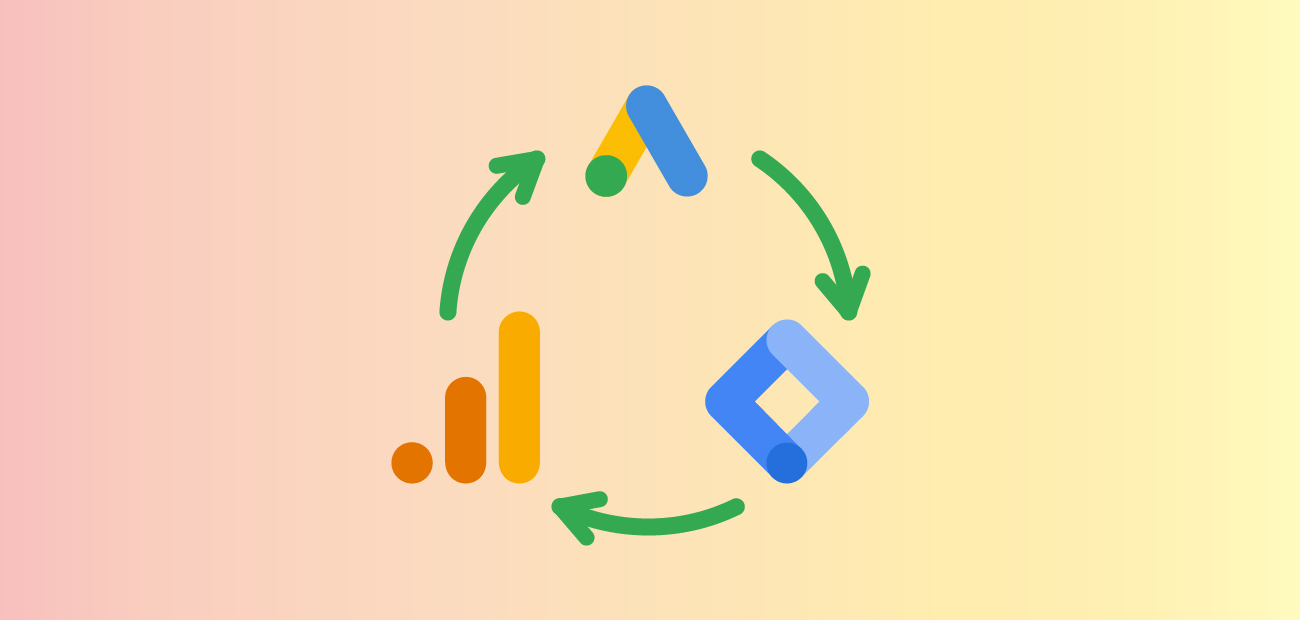Almost all businesses, regardless of their size or industry, use Google in some form. Be it Google Calendars, Google Drive, or trusty “old” Gmail. It seems as if everyone relies on at least one of Google’s products to support their work routine or everyday life. But we, marketers, need something more specific from Google. To be precise we need Google Ads, Google Analytics and Google Tag Manager.

Why? Well, here's a scenario where none of the above mentions are being used.
You didn't set up goal tracking in Google Tag Manager? Google Ads campaigns are not performing as they should be because you are not tracking your goals. You also have no idea what type of users are converting through Google Analytics. You are not using Google Ads? You are losing so much of the potential traffic to your website. You don't have Google Analytics implemented? Don't even get me started on how much valuable data you are missing out on.
Now back to real life. Let's learn more about these precious Google tools.
Google Ads, Google Analytics & Google Tag Manager
Google Ads is used for you to advertise on Google platforms (and their partners). Ads can be displayed to us when we search for something (search campaigns), when we watch content on websites and applications or when we watch a YouTube video.
Google Analytics is a free web tracking tool through which we can extract important data related to users who visited our websites, such as their source, the subpages they were on, how long they stayed, what action they performed on the website and much more. Based on that data we can adjust/analyze our content, strategy, campaigns, and most importantly - track our results.
All the strategies and budgets of this world mean nothing to us if we don't know the answer to the question - what are our results? To know the results, we need to set goals and track them. That's where Google Tag Manager, the tagging tool (read: tracking tool) jumps in. Using this tool, we set up Google Analytics (snippet code) so that we can track data from the website and set goals (orders, calls, inquiries).
One for All, All for One
To fully maximize the performance of Google Tools, we need to use all three of them. For example, if we have Google Ads and Google Analytics but we don't have Google Tag Manager we can't set up goal tracking and we won't know how many users converted through our website, which services convert the best, what type of audience works best and from which location. This means we won't be able to insert goals into Google Ads based on which the campaign will learn, be oriented and optimized. We won’t know if we have a great return on investment or if we are throwing money to the wind.The collected data will give Google Ads a way to find the users who can convert the fastest and optimize our campaigns, Google Analytics to customize our strategy and learn the most about our target users, and Google Tag Manager to set it all up.
From theory to practice
For our client Grand Sea Villas, a luxury sea villa development in Istria, Croatia, we wanted to leverage valuable leads and ultimately increase the number of inquiries through the official website.
We created the Google Tag Manager and Google Analytics accounts and implemented them on the website. The implementation happens via the snippet code (you are given codes and instructions from Google) or via a plugin if there is an option to do that. Once we made sure that Google Analytics tracks everything regularly, we needed to define the goals we wanted to track.
For Grand Sea Villas, our main goal were inquiries - contact form, mail and call. However, we also wanted to track secondary goals such as newsletter sign-ups and session duration. Besides deciding on the goals, we also had to define what kind of goals these were. For the Contact Form, we set the two goals via Google Analytics one being the Destination goal and the other Duration session goal. For the email, call and newsletter sign-up we set a "trigger" through Google Tag Manager on our website so that our goal in Google Analytics can "recognize" (track) it when someone clicks it - this type of goal is called Event goal. Thanks to these we've been able to track our goals, analyze which users convert best and optimize our Google Ads campaigns, resulting in over 90 inquiries for our client's luxury villas.
But, how do you know your Google Ads campaigns are performing well? The number of clicks and impressions? No! Through the goals you've set up in Google Analytics. Make sure you implement conversions (goals) from Google Analytics into Google Ads so that the algorithm can learn what kind of "actions" you want users to perform and to find them based on that. Google itself emphasizes the importance of setting and tracking goals for Google Ads campaigns to achieve the best possible results. Based on implemented goals, in addition to the algorithm which will help you in the search for targeted users, you'll also find out which campaign performs best and which users convert and why.
The Holy (Google) Trinity you didn’t know you needed
As I said at the beginning, one works for all, all work for one. If we remove one, we get an unfinished picture - that is, the unfulfilled potential of our possible results. So my dear readers, set up and follow everything on your website, use Google's "God-given" tools, and achieve the best results you possibly can (and you deserve).
If you want to make great things happen for your brand and need us to help you achieve your KPIs, reach out to us and let's get younited.


